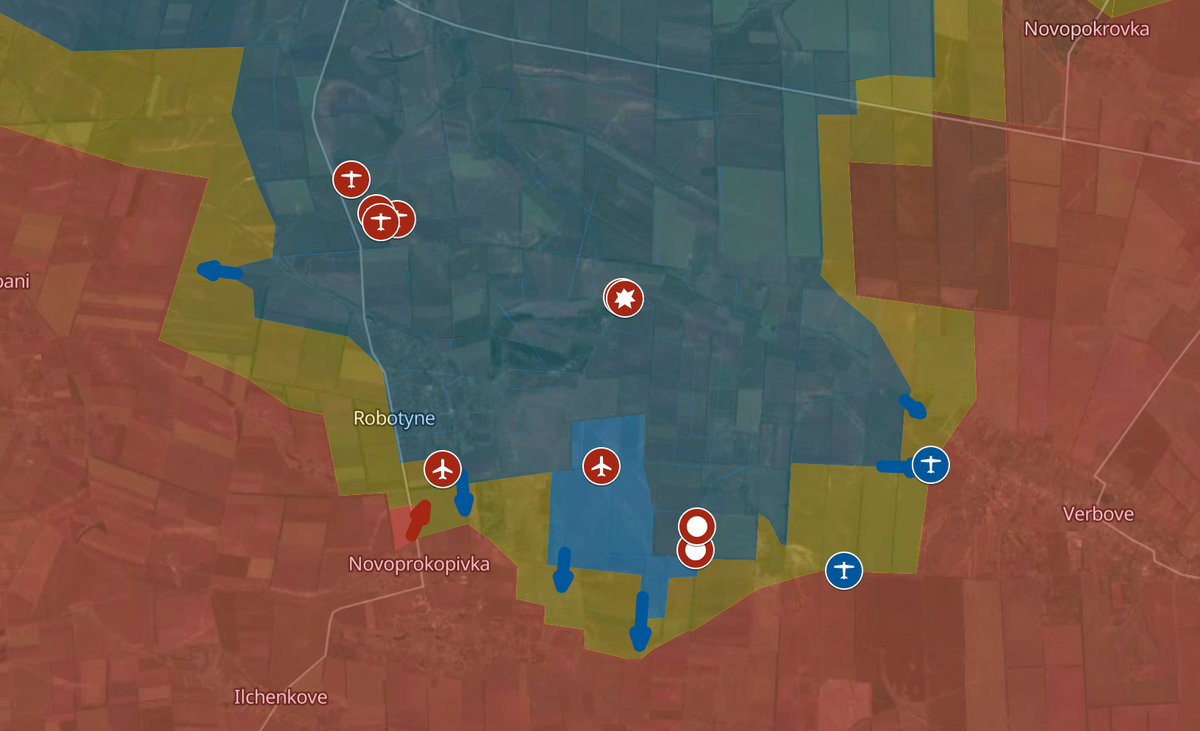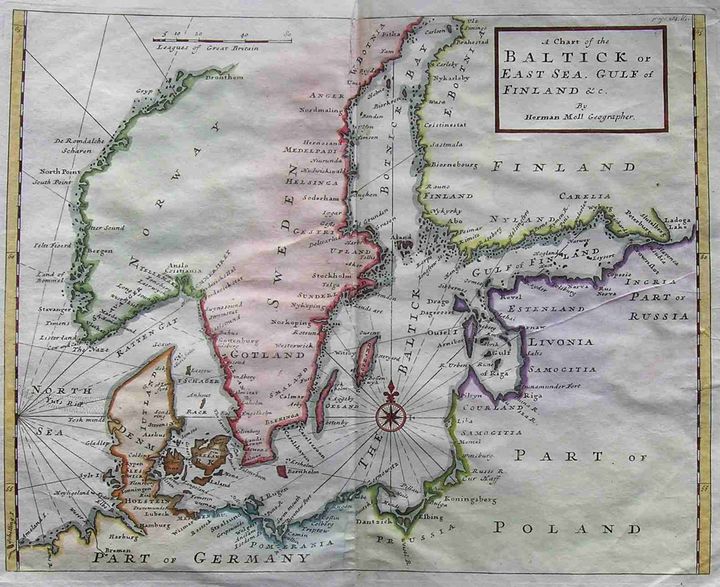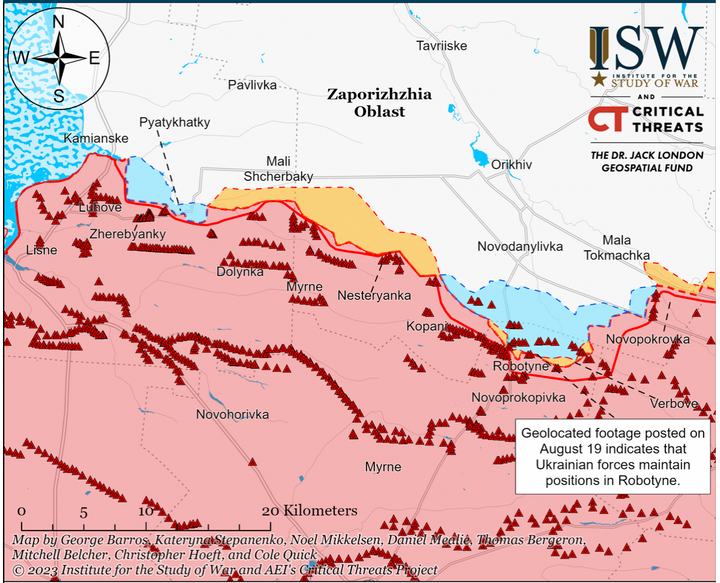Mentioning the War: Mid-September Checkin
Ukraine's back to the grind, but with some new and exciting long-range strike capabilities, and a comment on training and logistics.

Ukraine has fought its way to, and in some limited places over, the main belts of Russian defensive works in and around Robotyne, in Zaporizhzhia. The rhythm of this summer has been short sudden surges punctuated by long periods of symphonic long-range attrition.
Every gain on the ground is met with a surge of localized counterattacks from Russian forces, which remains puzzling to yours truly—yes, it is part of their doctrine, but Russia now lacks the sort of artillery advantage their doctrine calls for. It seems to me like Russia is paying a high price in men and materiel in order to move Ukraine off-schedule. The loss tempo amongst their tanks and major artillery systems has decidedly ticked up. They're transferring reserves into the combat zone for local counterstrokes that appear to be getting them beat up pretty bad.
The Ukrainian offensive in the Robotyne axis has been going on for more than 100 days now. It has been a monstrous task to get to were they stand now. I believe Ukraine will not slow down their offensives and my gut feeling is that the RU defensive strategy may show fatal pic.twitter.com/rkVmfMSu4v
— Erlend 🇮🇹🇳🇴🇺🇦 (@eDrotning) September 12, 2023
A convenient GIF showing progress along Robotnye
But it does seem like those lives have purchased another shift to an attritional phase. So let's look at that. In the early phases (and in some less-well-informed corners of the internet, still) one often heard that "Russia has 15,000 tanks!" — the implication being that it wouldn't matter if they lost a few hundred... or a few thousand. The floor on their tank losses is 2,300. They're losing about three a day right now that we civilians can see.
All wartime logistics boils down to a question of related rates: what is the rate of men and materiel loss versus the rate of replacement? We have several good public sources that have analyzed the literature and painstakingly combed satellite imagery in an effort to ascertain what Russia's tank reserve was, what it is now, and what their current replacement rate appears to be. Combining work from several different sources, such as the IAR, @partisan_oleg on twitter and Covert Cabal, we can see that Russia had maybe 6,000 workable tanks to start with, now at most 3K in reserve, and in increasingly old models. Queues to pull tanks out are now increasing, it seems like maybe they can pull and bring into serviceable shape some 500 a year. They are building between 100 and 200 new tanks a year. They are losing at least 1,100 a year, meaning their reserves are being severely taxed. A similar situation with artillery. At this trajectory we're looking at 12-18 months until operational reserves are spent. Can Ukraine's defense partners keep them supplied for that period? I'd like to think so, but there remain some troubling factors: new ammunition supply has been doggedly slow to come online, the US is still dragging its feet, inflating the value of its donations, and even then just barely managing to use all of the funding Congress has authorized. Europe has started to do a lot better, at least—but they're not manufacturing artillery ammo at sufficient volume!

Let's pivot for a second and talk about long-range strike capability. Since our last article, Ukraine has been utilizing relatively low-cost, long-range drones to humble Russian strategic air assets deep inside the Russian Federation. They're starting to put used tires on their parked aircraft in the hopes that it will do something. It's somewhat astonishing that Russian airspace is that vulnerable in the face of Ukrainian drones.
Furthermore, Russia continues to have no answer to "Storm Shadow" / "SCALP" class cruise missiles supplied by England, France, and Germany. Just last night, the dry docks at the Sevastopol base—home to Russia's Black Sea Fleet—a strategic asset of supreme importance, were struck, destroying or heavily damaging a Ropucha class vessel as well as a relatively new 636.3 Kilo class submarine. The Black Sea Fleet is in deep trouble. I can't think of a time when a combatant without a navy to speak of managed to destroy or incapacitate so many—extremely expensive—warships.
The US seems perpetually "on the edge" of deciding to supply Ukraine with ATACMS, which would provide a nice bridge capability between the existing HIMARS ammunition and Storm Shadow cruise missiles. I honestly don't understand what the hold up is.
A final topic for this update is a little (OK, a long) retrospective from Rob Lee and Michael Kofman—always amongst the sharpest and best observers—who point out that the decision to put most of the assault burden (and concentrating the high-end NATO gear) on green, freshly trained troops probably backfired and limited the ceiling for the initial counteroffensive period. Asking green troops to adapt live to blowtorch and corkscrew was probably asking too much. Even underequipped, Ukraine's veteran forces have accomplished a great deal in their sectors of the battlefield. This is a great observation: there is no substitute for experience. There's nothing to be done to change it now and those forces are learning the hard way. War is always about adaptation. My conclusions from the previous article hold:
The offensive appears, to my eye, to be setting the conditions for winning the war. It may not get there this year. Ukraine and her partners need to be preparing a 2024 effort now.
If you have any questions or specific topics you'd like me to dig into for the next update, let me know!
Слава Україні!



Comments ()